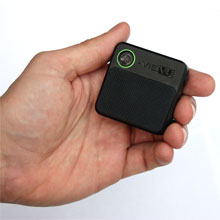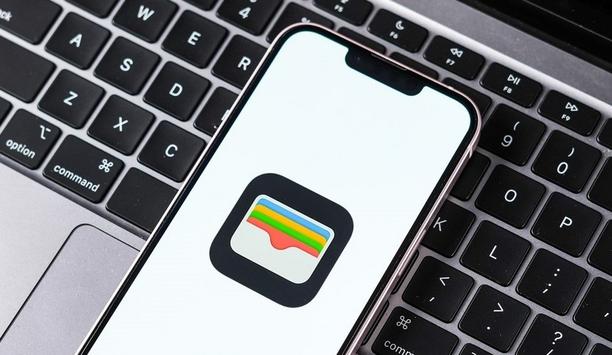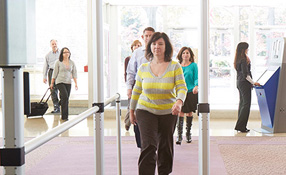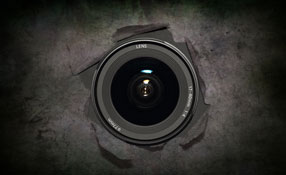The incident in Ferguson, Mo. has highlighted the value of body-worn cameras for police officers. However, the largest manufacturer of body-worn cameras is also actively promoting their use by others outside law enforcement, including security officers, human resource (HR) professionals and even CEOs. Body-worn camera manufacturer VIEVU, Seattle, Wash., sees a growing market among “prosumers” (i.e., professional consumers).
A “prosumer” might be anyone who needs to document their environment or their workday and to improve performance and accountability in the workplace. Examples include private security, contractors, inspectors or any in-home service provider, structural engineers, code compliance officers, insurance adjusters, fleet management, technicians, etc.
For instance, a security guard controlling access to the premises of a building could use a body-worn camera to record any erratic or suspicious activities. A retail loss prevention officer could easily record a shoplifter leaving the business.
Video can confirm the results of an inspection, or that an inspection actually took place. If there is an accusation of failure to act, a company can prove its agent acted and thus improve the client relationship. The equipment can document any situation that might be fraught with the possibility of liability claims, whether it’s an HR professional having to terminate an employee or a CEO documenting a meeting or other important employee interaction. Video is a documentation tool to avoid any possibility of retaliation.
Someone repossessing a car could document the process and provide evidence that it was done properly (e.g., did not involve trespassing on private property).
"We are in a digital age of documentation and sharing, and now we have an exploding blend of government, business and consumer video" |
The new camera interacts via WiFi with a smart phone, tablet or computer and can associate a body-worn camera with any of these devices. Video can be tagged and titled and shared using a service like DropBox or via email or a company database. Easier sharing and greater flexibility are possible because there are no chain-of-evidence concerns that limit the flexibility of body-worn camera systems used by law enforcement.
Steve Lovell, president of VIEVU, says there is “definitely” a need for the “prosumer” camera, given that many non-law-enforcement customers had bought the previous models for civilian uses (such as a maid service).
Another non-law-enforcement application is use by a state department of transportation to document inspections at tractor-trailer weigh stations. The resulting tickets can cost thousands of dollars and take trucks off the road, which is costly for trucking companies. Providing visual documentation proves to the owners of trucks – and to courts if a lawsuit results – that the inspection was properly administered.
“We are in a digital age of documentation and sharing, and now we have an exploding blend of government, business and consumer video,” says Lovell.
Based in Seattle, Wash., VIEVU manufactures wearable cameras for law enforcement, military and government uses. The company was founded by a former SWAT policeman as a means for officers to record their daily activity, thus promoting accountability and transparency and protecting police officers from false claims.
When an unarmed, black teenager was shot by police last August in Ferguson, Mo., the incident raised awareness of the benefits of body-worn cameras, largely because a body-worn camera would have captured elements of the Ferguson incident that have since been disputed. Traffic to VIEVU’s Web site since the Ferguson incident has increased about 70 percent as more people have downloaded product information and requested trial equipment. Lovell says the company currently has record levels of equipment being tested in the field. “Every agency across the country could be one shot away from a Ferguson incident,” says Lovell.
 |
| VIEVU's LE3 body-worn camera is lighter to work with a variety of uniform options |
VIEVU’s LE3 product is the third generation body-worn camera product for law enforcement. The durable, injected-molded camera is lighter (only 2.8 oz.) to work with a variety of uniform options; the camera is generally mounted on the shirt near the middle of the officer’s chest. The camera provides 1,280x720-pixel, enhanced-quality images and low-light capability. Using an accompanying battery pack, a police officer can record up to 12 hours in the field, with video securely uploaded at the end of the shift. The Veripatrol software platform ensures that video is not deleted, edited or altered (no removable media) and preserves the chain of custody to ensure admissibility in court. The Veripatrol software “locks down” the video and enables secure storage in the Microsoft cloud. (Software is provided free to camera buyers.)
Mute functionality allows operation of the LE3 in accordance with the laws of 12 states that require two-party consent to audio recordings. In other states, it is legal to record audio (as well as video) as long as one involved party (i.e., the police officer) knows audio is being captured.
Even with greater video quality available, some customers prefer to “dial down” to 640x480 pixels the resolution of video captured by body-worn cameras. “We don’t want the camera to see any better than an officer would see,” says Lovell. For example, some cameras in the market now offer a 160-degree field-of-view, which is greater than an officer’s typical 90-degree view. (Police departments don’t want a body-worn camera to capture video of something an officer couldn’t see, lest an attorney argue the officer should have seen it.)










































